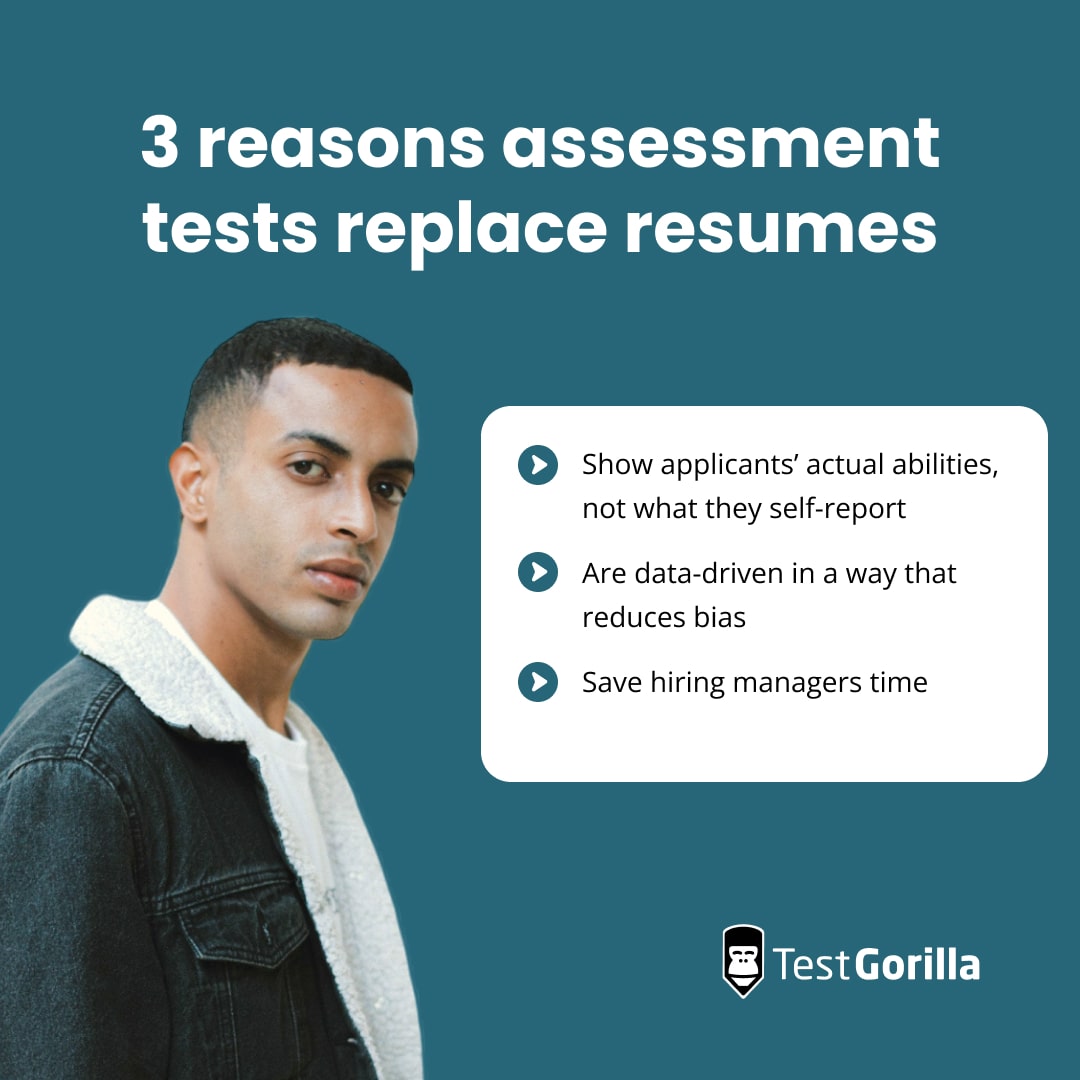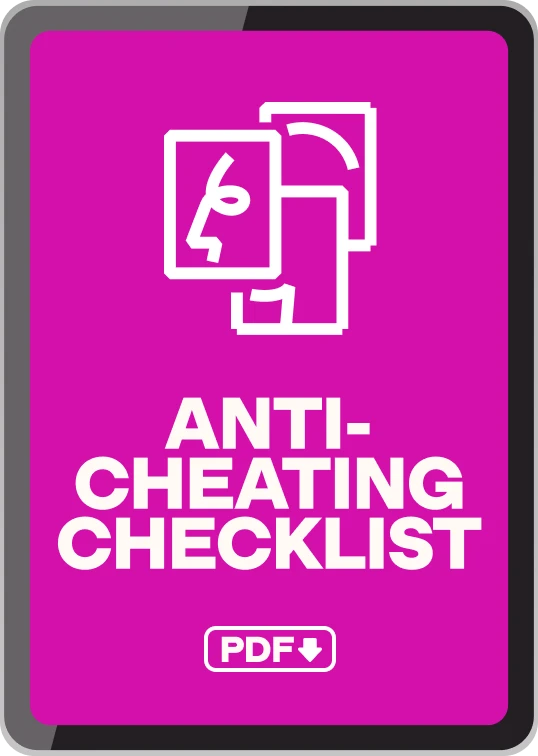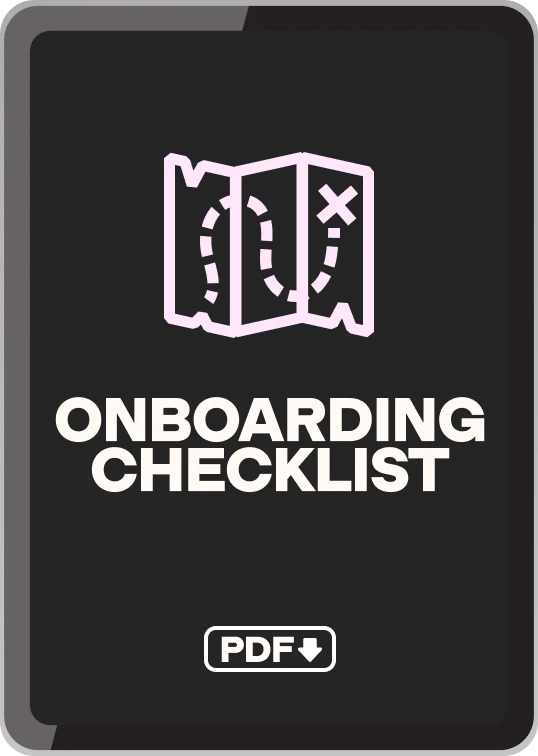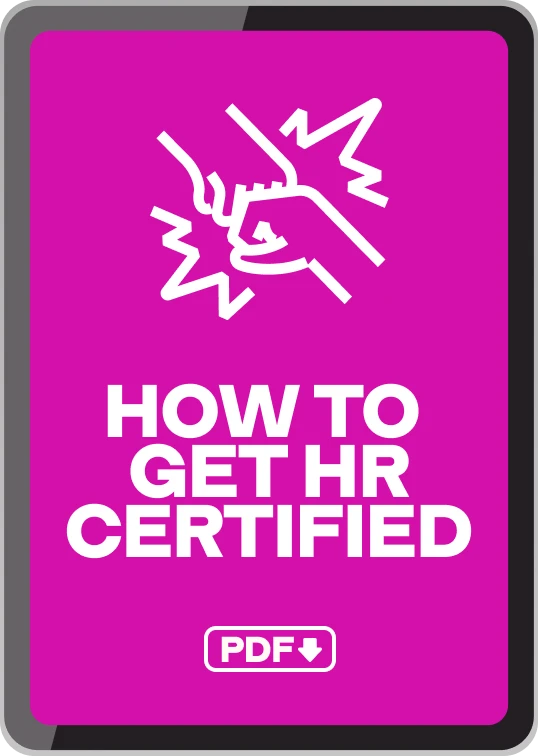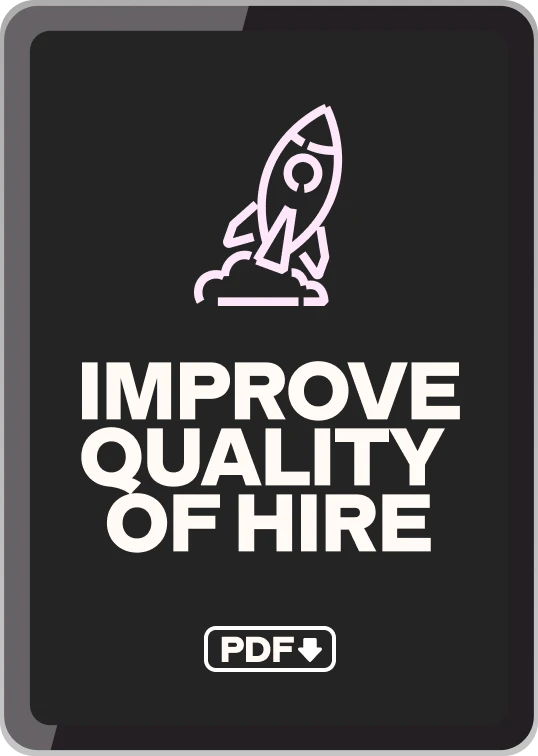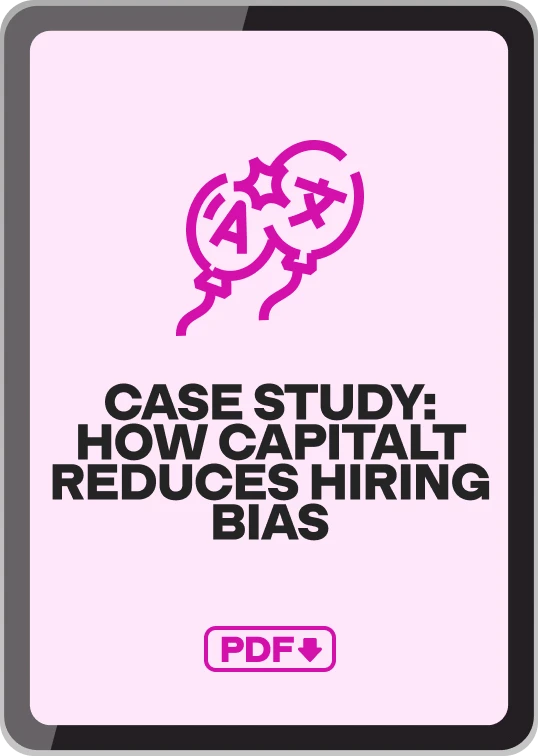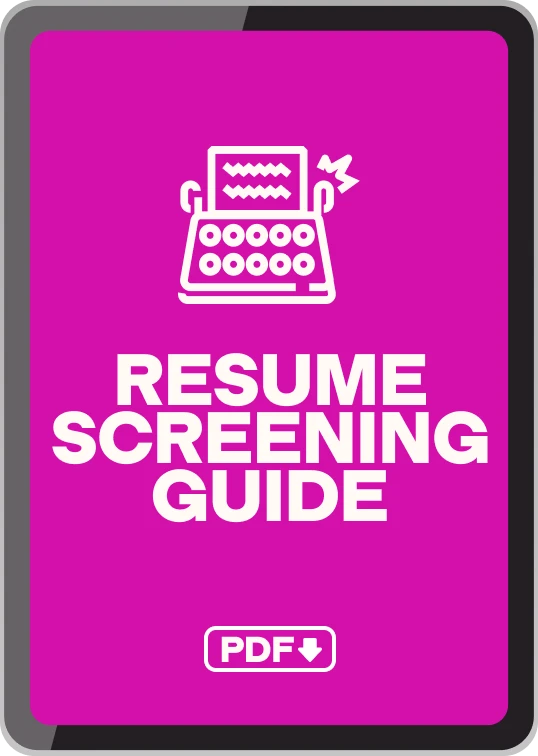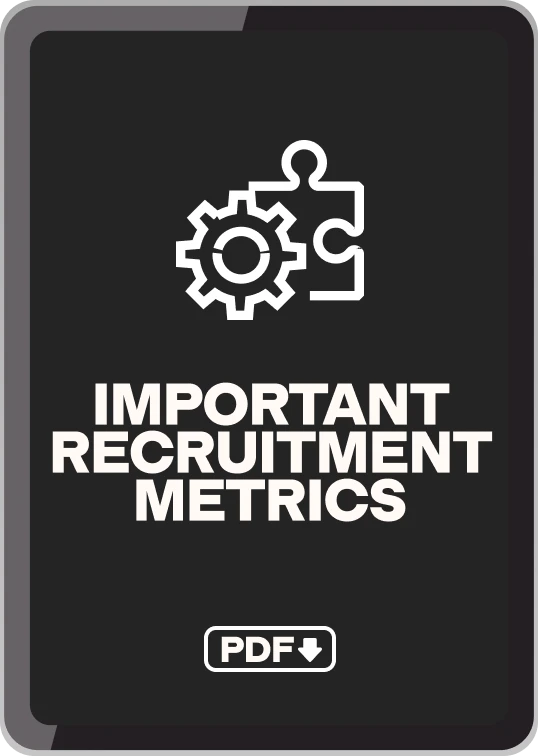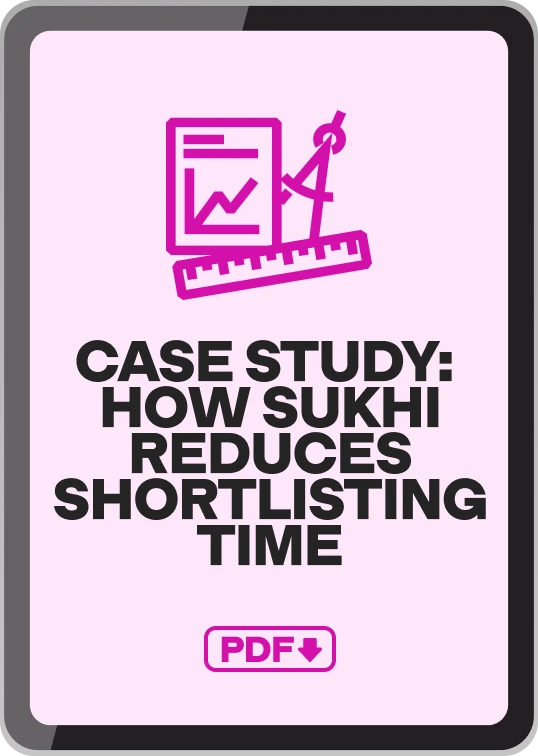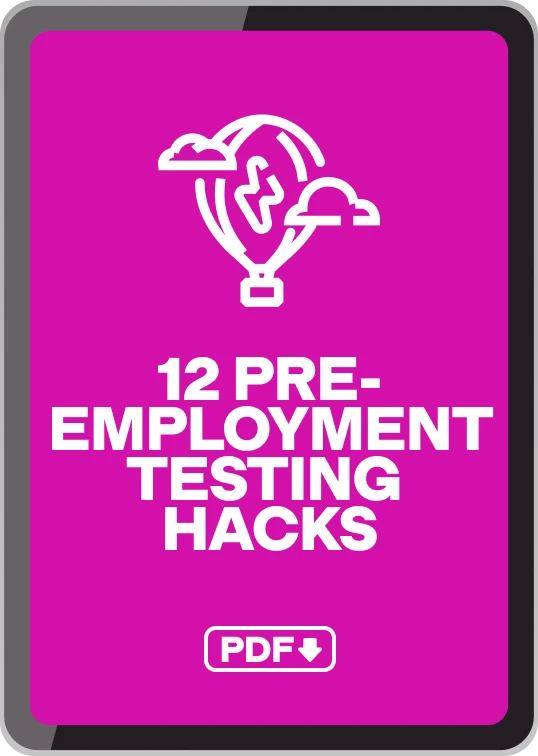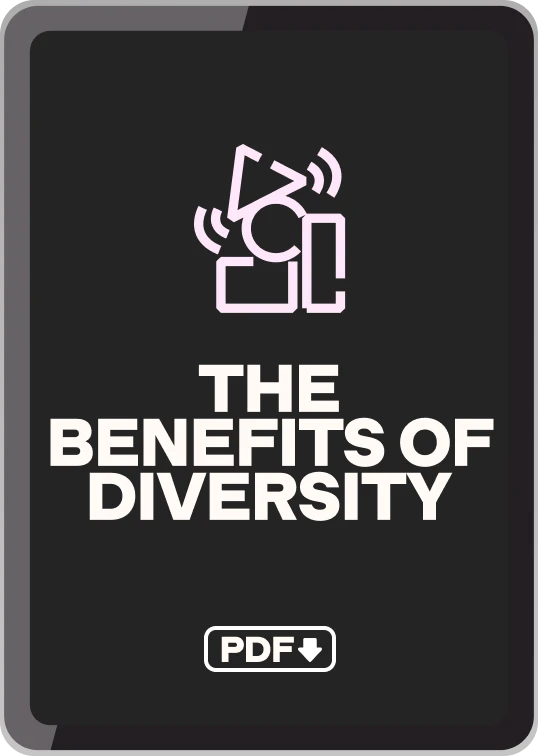Talent assessment tests: How to leverage this talent acquisition strategy and hire great candidates objectively
Vetting candidates properly can be challenging.
Are they lying on their resume? Do they have an accurate measure of their own skills? Or are you about to hire a candidate who isn’t qualified for the job?
If you get it wrong, you risk making an expensive mis-hire. Even worse, you need to start the hiring process for the role from the beginning. If you don’t, you risk compromising your team’s morale and developing an employee turnover problem.
The solution? Use talent assessment tests to hire candidates based on objective, reliable data.
Talent assessment testing is a strategy that makes a range of talent acquisition trends easier to get right. Our State of Skills-Based Hiring report found that 92.5% of organizations using this strategy saw a reduction in mis-hires.
In this guide, we explore how to use a library of skills tests to evaluate potential candidates’ abilities. We also cover the best practices for using recruitment assessment tests effectively and examples of real companies using this approach to succeed.
Table of contents
- What is a talent assessment test?
- Why are talent assessment tests important?
- The benefits of talent assessment tests
- 7 best practices for leveraging talent assessment tests to acquire top talent
- 3 examples of companies succeeding with talent assessment tests as a talent acquisition strategy
- Use talent assessment tests to hire the best
What is a talent assessment test?
A talent assessment test is a method that evaluates a candidate’s skills, abilities, and suitability for a role. These tests are a cornerstone of talent acquisition strategies that identify the right candidate for a position.
Crucially, they make it possible for employers to assess candidates without using resumes. Unlike a resume, a recruitment assessment test doesn’t rely on candidate self-reporting – which makes it a more reliable indicator of skill and ability.
Talent assessment tests are also a great means of gauging a candidate’s personality traits, values, and motivations in a data-driven way.
Here are a few talent assessment examples:
Skill assessments
Situational judgment tests
Cognitive ability tests
Personality tests
For example, a candidate applying for a role in graphic design might take the following talent assessment tests:
Attention to Detail (Visual) test
Adobe InDesign test
Communication test
Culture Add test
All of these tests are available in our test library.
Why are talent assessment tests important?
Talent assessment tests are important because they enable employers to make more informed, unbiased hiring decisions.
One of the biggest advantages of this talent acquisition strategy is the ability to assess candidates’ behavioral competencies directly.
With talent assessment tests, you don’t have to rely on candidates to report their own skills, motivations, or ability to contribute to your culture.
It’s much harder for candidates to misrepresent or overstate their own abilities during recruitment. Talent assessment methods empower hiring managers to avoid resume hiring disasters – along with all the costs that come with them.
Talent assessment tests give you all the tools you need to spot behavioral and cultural red flags, too, especially when testing for soft skills or culture add. This makes it easier for you to maintain your business’s good company culture and keep attracting top talent.
Above all else, talent assessment tests make hiring more efficient.
According to our State of Skills-Based Hiring 2022 report, 89.8% of organizations using talent assessment methods reported a reduction in cost-to-hire, and 91.4% reported a reduction in time-to-hire.
Skills testing enables employers to match candidates to open roles more effectively, reducing the risk of mis-hires. When hiring internally, talent assessment methods are a way to assess whether a new role is right for an existing employee.
Talent assessment tests are great for employees, too – especially candidates from marginalized backgrounds, who historically have less access to educational and work opportunities than their peers.
By taking the focus off work history and education, these tests increase many candidates’ chances of finding a job.
They help individuals gain a better understanding of their own strengths and weaknesses. In the long term, this sets them up for success in their search for employment.
Lastly, it’s hard to deny that candidates prefer talent assessment tests over traditional hiring methods: 54.3% of candidates surveyed in our report said they prefer a hiring process that includes talent assessment tests.
The benefits of talent assessment tests
Talent assessment tests come with a huge array of benefits for employers.
Here are some of their biggest advantages, supported by real data.
Higher-quality hires
Skills-based hiring methods like talent assessment tests make it easier to hire candidates who will excel in their new roles – and to avoid mis-hires, which cost US businesses up to $1tn every year.
According to research from McKinsey, hiring based on skills is five times more predictive of future job performance than hiring based on education.
When you test candidates’ abilities during hiring, you stand a better chance of hiring a top-quality candidate.
Not only do you find higher-quality hires when you use this strategy, but you reduce the time it takes to find them. As we mentioned earlier, more than 90% of organizations hiring using talent assessment tests report a reduction in time-to-hire.
Improved employee retention and satisfaction
According to our State of Skills-Based Hiring 2022 report:
Voluntary turnover is 50% lower for candidates recruited using talent assessment tests
Only 15.1% of employees hired using skills-based hiring methods plan to leave their jobs in the next year
72.1% of workers hired using talent assessment tests are happy in their role
Hiring using talent assessment tools has a measurable impact on employee retention and satisfaction. Employees you hire this way are more likely to be happy, productive, and willing to stay in their roles for the long haul.
Increased candidate diversity
Hiring using talent assessment tests gives diverse candidates a fairer chance. Our State of Skills-Based Hiring 2022 report shows that 91.1% of businesses that adopted skills-based hiring methods saw an improvement in candidate diversity.
Organizations hiring using talent assessment tests are more likely to take further steps to address unconscious bias during recruitment, creating a more inclusive hiring process.
Those benefits don’t affect only candidates. Deloitte reports that 75% of executives believe hiring, promoting, and assigning workers based on skills democratizes and improves access to opportunities.
Better employer branding
When you promote it effectively, a commitment to talent assessment tests as a hiring strategy is a great asset to your employer branding.
A 2022 survey found almost 60% of employees choose employers because of shared values.[1]
Good employer branding is especially valuable if you want to hire Gen Z candidates. These younger workers value workplace diversity and occupational mobility – and as we’ve seen, talent assessment tests make it easier to hire diverse candidates and promote from within.
By building your skills-based approach to hiring into your corporate identity, you bolster your ability to attract young and driven talent.
7 best practices for leveraging talent assessment tests to acquire top talent
Now you know what talent assessment tests can do for your recruitment strategy, so it’s time to learn how to use them effectively.
Follow these seven actionable tips to make your talent assessment testing process as useful as possible for your company.
Talent assessment test best practices at a glance
Best practice | How it helps |
1. Kick resumes to the curb | Reduces time-to-hire and limits the impact of implicit bias on candidates |
2. Use talent assessments early in the process | Identifies top candidates early and offers a better, faster experience for all applicants |
3. Help candidates prepare for the tests | Limits candidate anxiety and ensures disabled and neurodiverse candidates have a fair chance of success |
4. Choose the right assessment software for your budget | Maintains a healthy cost-to-hire for your company without compromising on results |
5. Consider all types of talent assessment tests | Offers a direct, complete perspective on candidates’ prospective job performance |
6. Assess culture add, not culture fit | Reduces hiring bias and strengthens your company culture |
7. Combine talent assessment tests with structured interviews | Ensures every step of the recruitment process is informed by data and less prone to bias |
1. Kick resumes to the curb
On average, each corporate job opening receives 250 applications.[2]
Imagine reading that many resumes. Now imagine trying to make informed decisions about which candidates to meet in person based solely on the limited information in each document.
It’s frustrating work, and it takes up time that could be spent better elsewhere.
Worse still, resume-based hiring is a breeding ground for unconscious bias. If you rely on resumes when hiring, you probably aren’t hiring the best candidates.
The good news is that when you use talent assessment tests, you don’t need resumes.
That’s because talent assessment tests:
Show applicants’ actual abilities, not what they self-report
Are data-driven in a way that reduces bias
Save hiring managers time
However, if you don’t want to get rid of resumes – perhaps skills-based hiring is a hard sell within your company – we recommend offering talent assessment tests to candidates before reviewing their resumes.
That way, you can narrow your field of candidates with more concrete data and less bias in play.
2. Use talent assessments early in the process
When you recruit using traditional hiring methods, the first stage involves screening candidates’ resumes and cover letters to identify the people you want to consider further.
But if you aren’t using resumes, how do you decide which candidates are strong enough to move forward?
The solution is simple: Make sure your pre-employment exams take place early in the hiring process.
They’re a reliable way to compare all candidates fairly at the outset of your recruitment process. Talent assessment tests are driven by data, so they aren’t as subject to implicit bias as resumes – meaning a wider pool of candidates gets a chance to prove their abilities.
Plus, you screen out candidates who don't have the skills needed to succeed in this role. You're left with a smaller group of qualified candidates, making it easier to focus your attention where it matters.
This creates a better candidate experience for your applicants. It also makes candidate relationship management easier since you’re in direct communication with applicants at an earlier stage of hiring.
Ultimately, talented candidates are more likely to accept an offer of employment if they feel they’ve been treated well during recruitment.
3. Help candidates prepare for the tests
Whatever form it takes, job searching is stressful for candidates. Skills tests, in particular, often cause candidates some anxiety – whether because of their perceived high stakes or because candidates are used to showing their degrees and work experience instead.
There are other reasons why candidates may need some extra support with pre-employment testing, too. Disabled or neurodivergent candidates have a legal right to ask for reasonable accommodations that enable them to carry out the tests.
These accommodations level the playing field so that everyone has the ability to perform equally well. Accommodations are a form of flexibility in the workplace that make a huge difference to candidates who need them.
Given all this, here are the steps you should take to help candidates prepare for talent assessment tests:
Explain clearly, in advance, what form the tests will take
Give candidates the opportunity to request accommodations
Ensure applicants have a chance to ask questions and receive answers about the process
4. Choose the right assessment software for your budget
There’s plenty of talent acquisition technology out there, from recruiting automation software to AI in talent acquisition.
But when administering talent assessment tests, you need to choose the talent assessment software platform that works best for your company.
And although skills-based hiring methods reduce cost-to-hire over the medium and long term, the process of adopting this approach requires you to take a look at your recruiting budget.
Not only will you need to invest in new technology – you’ll also have to train your HR staff how to use it effectively.
Fortunately, with a careful hiring plan, it’s easy to identify the software your company needs. Just pin down the features you know you need and stick to software that offers those features.
For example, if you’re planning on hiring internationally, you’ll need a language testing software like TestGorilla that offers tests for different levels of proficiency in 12 languages.
Plan ahead, invest smartly, hire the best talent, and deliver the best return on investment.
5. Consider all types of talent assessment tests
Not all talent assessment tests are the same. Here are a few recruitment assessment test examples that go beyond typical written skills tests:
Real-world job trials: brief assignments or work samples in which a candidate completes an actual task
Virtual job simulations: giving a candidate tasks similar to (and in similar conditions to) the ones they will complete as part of their specific job requirements
Behavioral and situational interview questions: asking candidates how they would respond to fictional but plausible workplace scenarios
These techniques are helpful for recruiters because they give you clear examples of how job candidates will perform the duties of their prospective role. Of course, you need to make sure they’re rigorously planned so they’re as fair and data-driven as possible.
If you’re looking for a way to assess potential talent over the long term, consider creating an internship program for future leaders. You’ll gain valuable insight into candidate performance in your work environment, and you can hire top performers when the program concludes.
6. Assess culture add, not culture fit
You may have heard recruiters talk about “culture fit” in the past. Many companies make hiring decisions based on whether they believe a candidate fits well into their company culture. But culture fit is highly subject to bias, and it’s hard to measure accurately.
Culture add, on the other hand, is easier to measure. It describes the likelihood that a new hire will reflect the company’s core values in their work and behavior. Its focus on shared values means it’s less prone to bias and leads to a more diverse work environment.
When using TestGorilla, it’s easy to test for culture add:
Set up the talent assessment for the role you need to fill
When selecting tests for your assessment, make sure to add the Culture Add test, which you customize for your company’s values
Send the assessment out to candidates and measure their results against your company’s values.
Culture add is as important as a candidate’s skills and abilities, because your company culture is key to attracting the right talent.
Hire for culture add, and you stand a better chance of maintaining the quality of your culture and enabling it to flourish.
7. Combine talent assessment tests with structured interviews
The recruitment process doesn’t end with talent assessment tests. When done right, interviews are a great source of valuable data about candidates.
But if your interviews aren’t structured to provide consistent, reliable data, you risk reintroducing bias into the hiring process and undermining your company’s talent acquisition analytics.
Structured interviews are more than a conversation between candidates and hiring managers. They’re a way to further your data-driven recruiting process by ensuring you collect quantitative data about each candidate you interview.
That data then supplements the data you gather during talent assessment tests, giving you a broader picture of each candidate’s potential to succeed.
Structured interviews are a better predictor of job performance than unstructured interviews. A structured interview is likely to predict 26% of a candidate’s future performance, while unstructured interviews predict only 14%.[3]
When combined with skills testing, structured interviews put you in a better position to hire the very best.
3 examples of companies succeeding with talent assessment tests as a talent acquisition strategy
Ready to see how talent assessment tests work in practice?
All three of these companies use them regularly and see amazing results.
Follow these case studies to see how real businesses make talent assessment tests work for them, along with our insights into how they get the process right.
Talent assessment test success stories at a glance
Company | How it’s using talent assessment tests |
IBM | Employs skills testing during hiring to close skill gaps and offer equal opportunities to candidates without four-year degrees |
Revolut | Uses language tests to improve time-to-hire and candidate experience |
Walmart | Uses skills tests to broaden external talent pools and promote from within the company |
IBM
IBM, a multinational technology corporation, is often cited as one of the largest companies using talent assessment tests during hiring. It uses role-specific skills assessments alongside resumes to evaluate candidates’ relevant skills and abilities.
To limit candidate anxiety, it provides clear information about what applicants can expect from these talent assessment tests – including the time frame candidates have to complete them.
Nickle LaMoreaux, the firm’s chief human resource officer, says the company’s approach emerged from necessity. Since two-thirds of the adult US population don’t have a bachelor’s degree, the business had to rethink its talent acquisition strategy.
IBM quickly found that relevant skills were a better indicator of job performance than a four-year degree, and adjusted its hiring methods accordingly.
Today, 50% of jobs within the firm don’t require a four-year degree. Instead, the business hires candidates based on skills – and anyone acting as a hiring manager is required to go through training on skills-based hiring methods before posting an open role.
The company is known for its comprehensive approach to learning and development. Employees have access to a learning portal that indicates which skills are in increasing demand so they can focus their learning accordingly.
This skills-first approach positions IBM as a destination for top talent, regardless of educational background.
Revolut
Revolut, a financial services firm, needed to hire multilingual customer support teams to meet the needs arising from its growth. This meant finding a way to assess candidates’ language abilities.
But the company’s initial approach to the pre-employment assessment process was time-consuming and slow. HR staff needed to review written tests manually and conduct verbal tests in person. In a large company with extensive hiring needs, this was especially inefficient.
These delays were also frustrating for candidates, who were left waiting for information about their progress through the recruitment process.
Revolut ultimately adopted TestGorilla’s language tests at an early stage of recruitment. This meant that HR teams no longer had to deal with reviewing or conducting assessments at all; they were freed up to work on other tasks.
The new talent assessment tests were quicker for candidates to complete and easier for HR staff to set up, reducing the company’s time-to-hire by 30% to 40%.
Other results included:
More objective screening of candidates
Better candidate experience
Higher quality of candidates interviewed and hired
The business is now in a better position than ever to attract, select, and retain top talent in any language.
Walmart
Walmart has committed to skills-based hiring practices in its big-box stores across the US and behind the scenes in its offices.
With the Walmart Foundation, the company has invested more than $144m to encourage career mobility for front-line staff both within the organization and outside it.[4]
That work includes a commitment to skills-based hiring practices.
The business is known to make use of talent assessment tests during hiring. Those tests vary according to the role, and include the Retail Associate Assessment for hourly employees and the Manager Employer Assessment for management.
Candidates take these tests when making an online application, and the results help hiring teams assess their suitability for the role they’ve applied for. Applicants for hourly positions don’t even have to include a resume, though they have the option to.
The firm is also piloting a digital associate profile system, which matches its employees to suitable internal roles based on their skills, credentials, and training. This fosters internal mobility and enables workers to build careers within the company regardless of background.[5]
Anyone can apply for a job at the company and stand a fair chance of succeeding – and once hired, anyone can progress to a more involved role. All this makes Walmart a great destination for talent.
Use talent assessment tests to hire the best
Talent assessment tests are the most reliable way to hire.
They help businesses reduce recruitment bias and hiring discrimination. They improve cost-to-hire and time-to-hire. And they create a better experience for candidates, leading to higher satisfaction and better employee retention for your company.
By adopting these tests as part of your recruitment process – especially alongside other methods like structured interviews – you show your firm’s commitment to an objective, data-driven hiring process that prioritizes talent above everything else.
It’s a way to position yourself as a great destination for skilled, capable workers, all while avoiding the nagging uncertainty that you’ve hired the wrong person for the job.
And make sure you check out our Communication test, which helps hiring managers gauge one of the most important soft skills for new employees.
Next, learn how to leverage talent assessment tests when hiring remote employees and recruiting internationally.
Sources
“2022 Edelman Trust Barometer Reveals Even Greater Expectations of Business to Lead as Government Trust Continues to Spiral”. (January 18, 2022). Edelman. Retrieved August 17, 2023. https://www.edelman.com/news-awards/2022-edelman-trust-barometer-reveals-even-greater-expectations-business-lead-government-trust
“50 HR & Recruiting Stats That Make You Think”. (January 20, 2015). Glassdoor. Retrieved August 24, 2023. https://www.glassdoor.com/employers/blog/50-hr-recruiting-stats-make-think/
Bock, Laszlo. (April 7, 2015). “Here's Google's Secret to Hiring the Best People”. Wired. Retrieved August 6, 2023. https://www.wired.com/2015/04/hire-like-google/
“Human Capital: Good Jobs & Advancement for Associates”. (May 31, 2023). Walmart. Retrieved August 6, 2023. https://corporate.walmart.com/esgreport/human-captial-good-jobs-advancement-for-associates
“Walmart”. Business Round Table. Retrieved August 6, 2023. https://www.businessroundtable.org/mpi/walmart
Related posts
You've scrolled this far
Why not try TestGorilla for free, and see what happens when you put skills first.
Latest posts
The best advice on pre-employment testing, in your inbox.
No spam. Unsubscribe at any time.

Hire the best. No bias. No stress.
Our screening tests identify the best candidates and make your hiring decisions faster, easier, and bias-free.
Free resources
This checklist covers key features you should look for when choosing a skills testing platform
This resource will help you develop an onboarding checklist for new hires.
How to assess your candidates' attention to detail.
Learn how to get human resources certified through HRCI or SHRM.
Learn how you can improve the level of talent at your company.
Learn how CapitalT reduced hiring bias with online skills assessments.
Learn how to make the resume process more efficient and more effective.
Improve your hiring strategy with these 7 critical recruitment metrics.
Learn how Sukhi decreased time spent reviewing resumes by 83%!
Hire more efficiently with these hacks that 99% of recruiters aren't using.
Make a business case for diversity and inclusion initiatives with this data.

